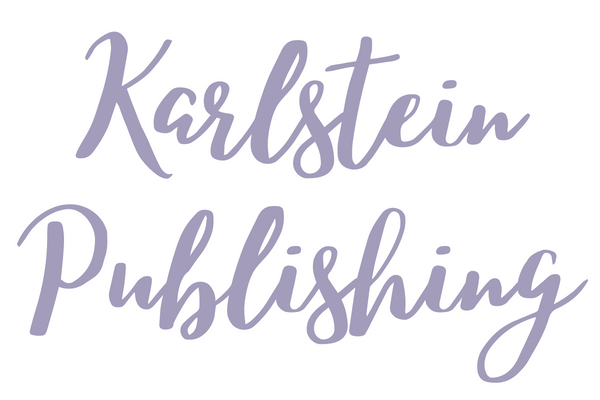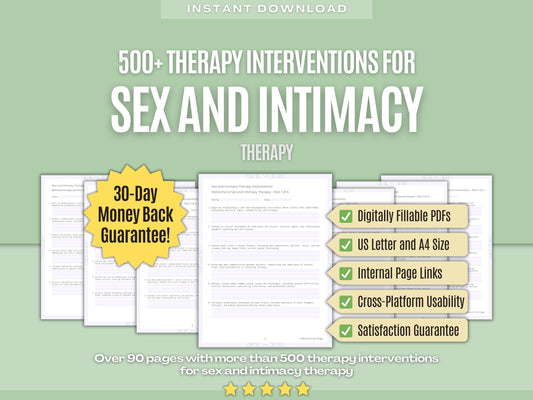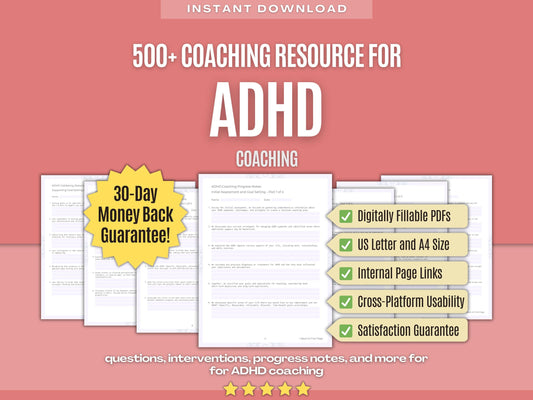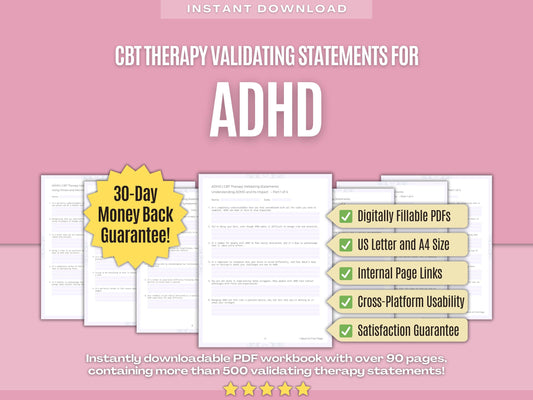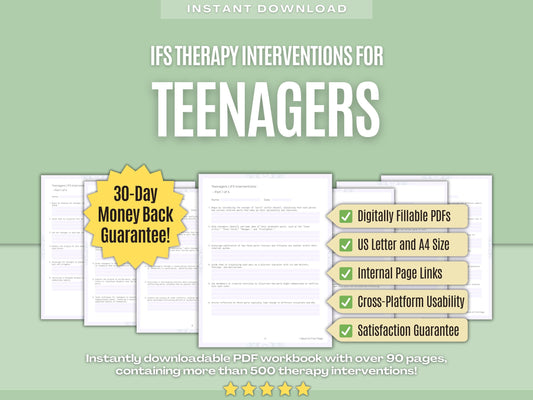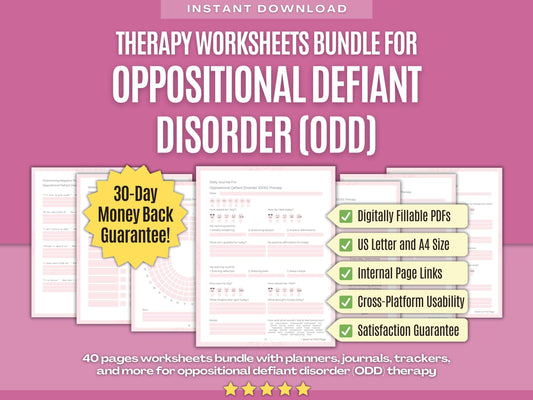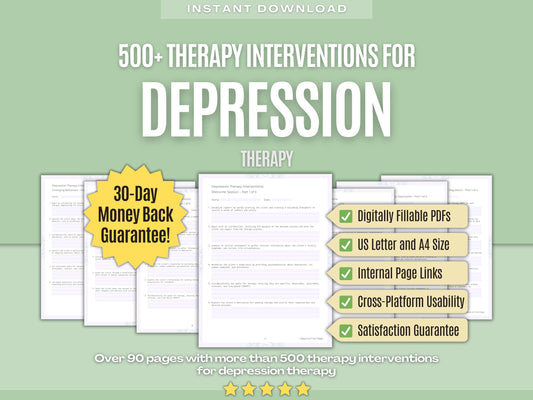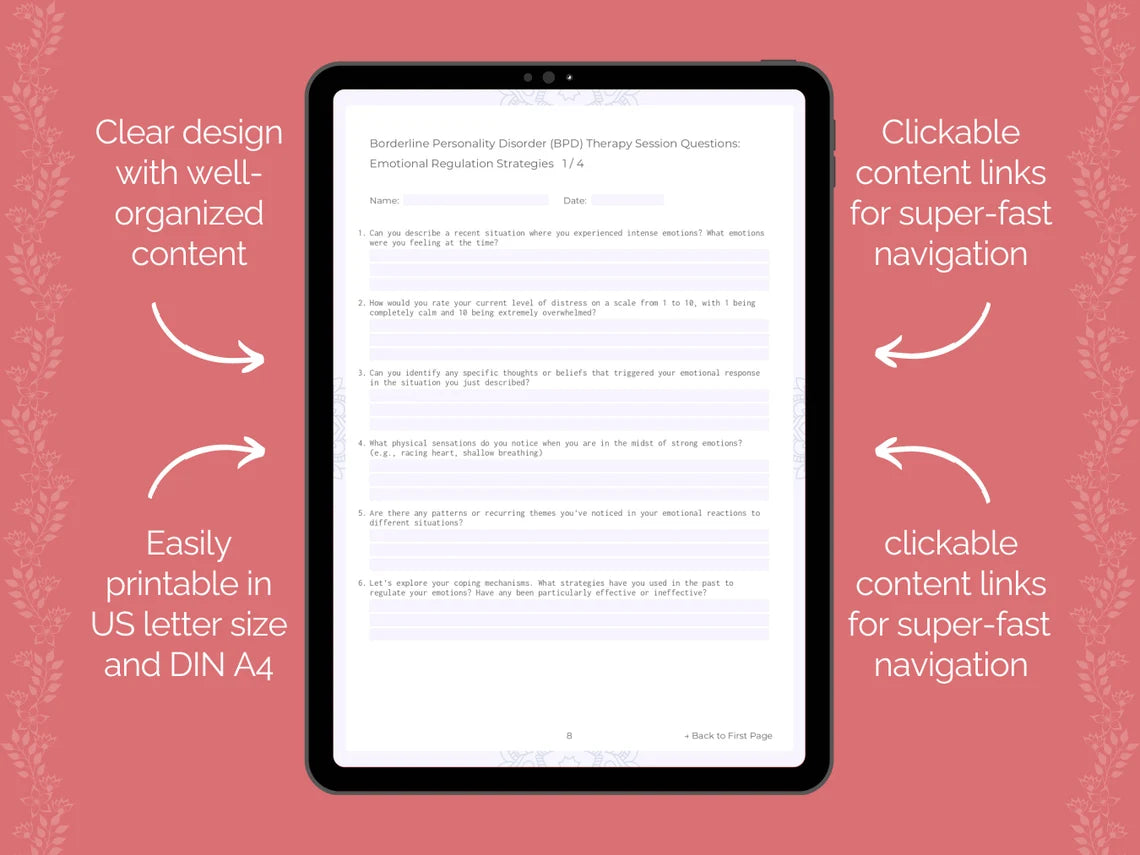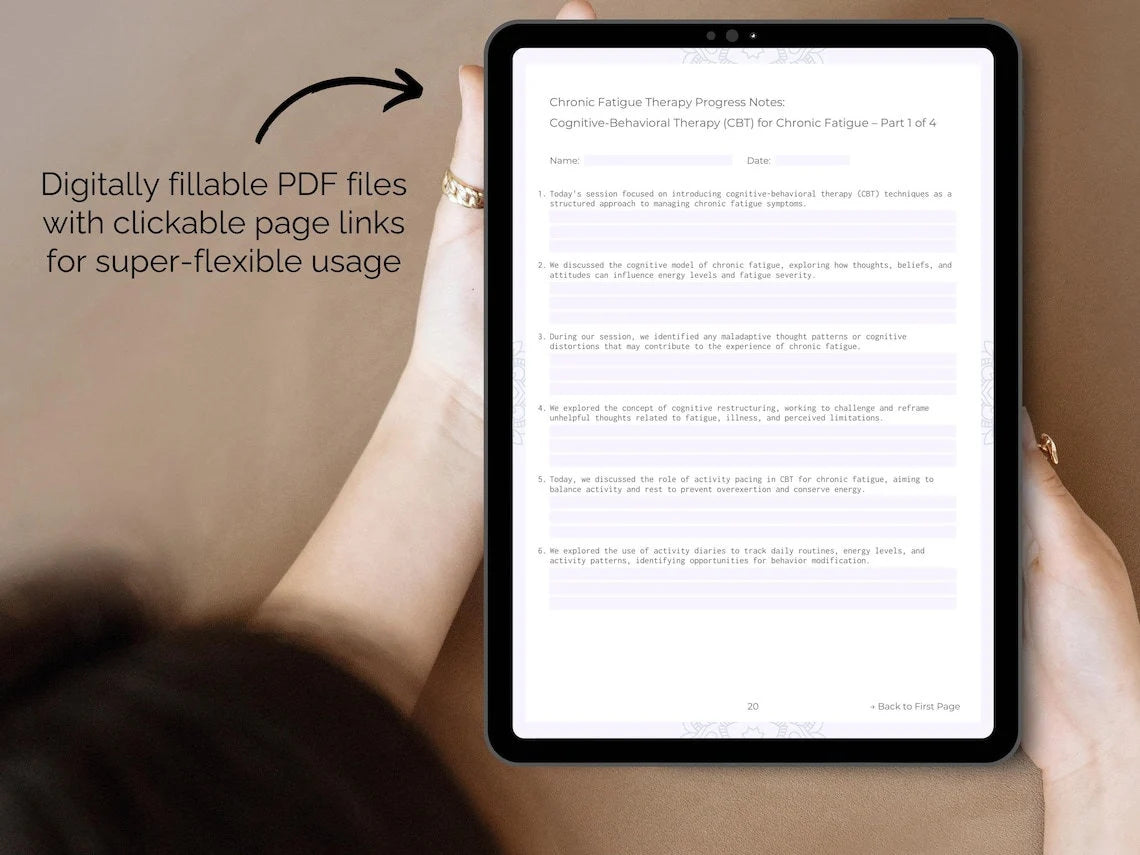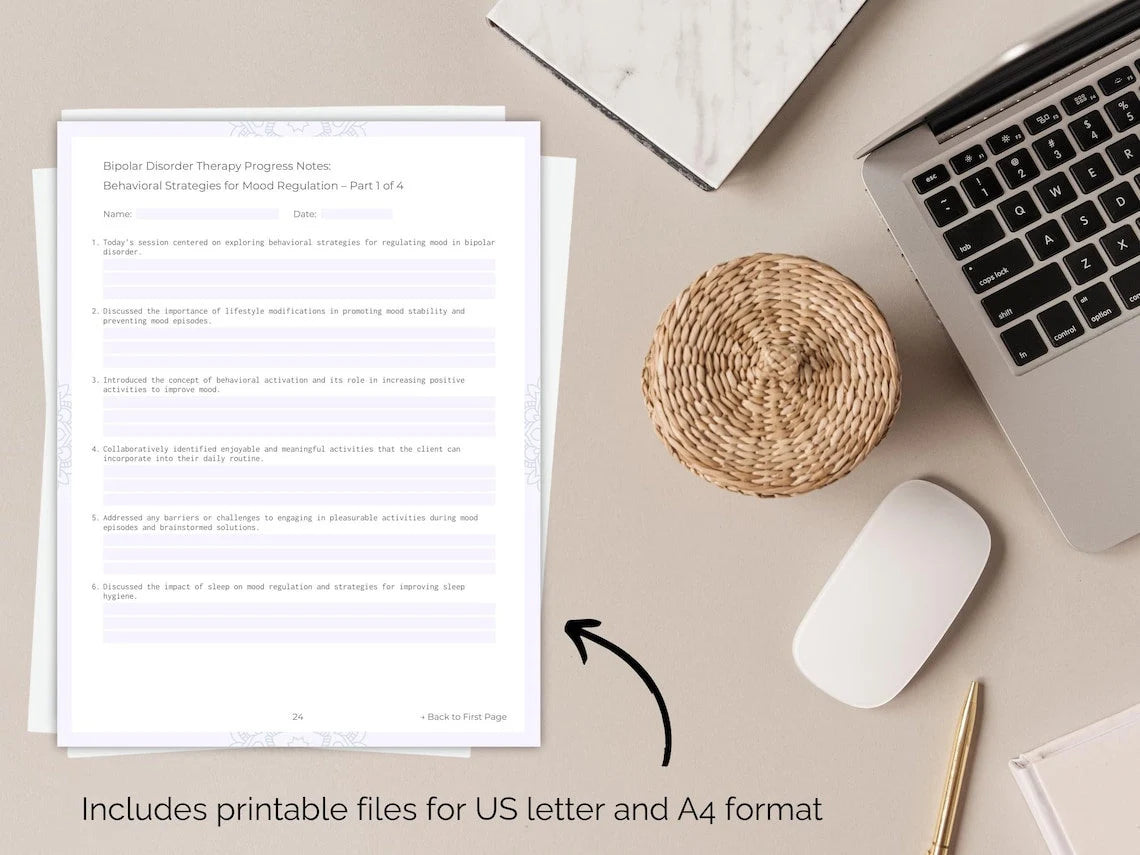Elevate Your Therapy and Guide Your Clients to Inner Healing with Our Social Anxiety Disorder Therapy Interventions! ✨
1. Beginning Therapy Sessions
- Start by building rapport and establishing trust with the client, creating a safe space for them to share their experiences and concerns.
- Collaboratively set the agenda for the session, inviting the client to prioritize topics they would like to discuss or goals they would like to work on.
- Validate the client's experiences and emotions, expressing empathy and understanding for the challenges they face.
- Discuss the client's goals and expectations for therapy, clarifying what they hope to achieve and how they envision their life being different.
- Collaboratively identify and challenge any negative or unhelpful thoughts the client may have about themselves, others, or social situations.
- Introduce the concept of behavioral experiments, encouraging the client to test out beliefs and assumptions in real-life situations.
- Provide psychoeducation about the fight-or-flight response and how it manifests in social situations, normalizing physical symptoms of anxiety.
- Collaboratively develop a hierarchy of feared social situations, starting with less challenging scenarios and gradually progressing to more difficult ones.
- Address any concerns or questions the client may have about medication or other adjunctive treatments for social anxiety, providing information and support.
- Validate the client's efforts and progress in therapy, celebrating small victories and milestones along the way.
- Discuss the importance of setting realistic expectations for progress in therapy, emphasizing that change takes time and effort.
2. Social Anxiety Psychoeducation
- Begin by providing an overview of social anxiety disorder, including its definition, prevalence, and potential impact on individuals' lives.
- Discuss the differences between normal nervousness in social situations and the more intense and persistent anxiety experienced by individuals with social anxiety disorder.
- Provide information about the cognitive-behavioral model of social anxiety, which highlights the role of negative thoughts, beliefs, and behaviors in maintaining the disorder.
- Offer psychoeducation about the fight-or-flight response and how it manifests in social situations, leading to physical symptoms like rapid heartbeat or shortness of breath.
- Address common myths and misconceptions about social anxiety, such as the idea that individuals with the disorder are simply shy or lacking in social skills.
- Provide examples of specific social situations that commonly trigger anxiety for individuals with social anxiety disorder, such as public speaking, meeting new people, or attending social gatherings.
- Discuss the potential consequences of untreated social anxiety, including feelings of loneliness, isolation, and impaired social or occupational functioning.
- Explore the importance of seeking professional help for social anxiety, emphasizing the benefits of therapy in reducing symptoms and improving overall well-being.
- Offer resources for further information and support, such as books, websites, or support groups for individuals with social anxiety disorder.
- Discuss the potential stigma surrounding mental health conditions like social anxiety and strategies for coping with and challenging negative attitudes or beliefs.
- Provide information about potential co-occurring conditions or comorbidities commonly associated with social anxiety disorder, such as depression or substance abuse.
3. Mindfulness-Based Interventions
- Begin by introducing the concept of mindfulness and its relevance to managing social anxiety, explaining that mindfulness involves paying attention to the present moment with openness and acceptance.
- Explore the connection between mindfulness and social anxiety, discussing how mindfulness practices can help individuals become more aware of their anxious thoughts and reactions in social situations.
- Discuss the role of non-judgmental awareness in mindfulness, encouraging clients to observe their thoughts and emotions without getting caught up in self-criticism or rumination.
- Offer guided mindfulness exercises during therapy sessions, allowing clients to experience the benefits of mindfulness firsthand and develop their practice over time.
- Discuss the potential challenges or barriers to practicing mindfulness, such as difficulty staying focused or resistance to uncomfortable emotions, and explore strategies for overcoming these obstacles.
- Explore the connection between mindfulness and exposure therapy for social anxiety, discussing how mindfulness techniques can enhance the effectiveness of exposure exercises by increasing tolerance for distress.
- Discuss the concept of "mindful socializing," which involves bringing mindfulness skills into social interactions to help manage anxiety and enhance interpersonal communication.
- Provide guidance on integrating mindfulness into everyday activities, such as eating, walking, or engaging in hobbies, to foster a sense of presence and engagement with the moment.
- Offer mindfulness exercises specifically tailored to address common triggers or challenges related to social anxiety, such as mindful public speaking or mindful socializing with peers.
- Explore the use of mindfulness-based stress reduction (MBSR) techniques for managing physiological symptoms of anxiety, such as muscle tension or rapid heartbeat, in social situations.
- Encourage clients to approach mindfulness with a spirit of curiosity and experimentation, reminding them that there is no right or wrong way to practice mindfulness and that progress takes time and patience.
4. Dialectical Behavior Therapy (DBT) for Social Anxiety
- Begin by introducing the principles of dialectical behavior therapy (DBT) and its relevance to treating social anxiety disorder, explaining that DBT combines cognitive-behavioral techniques with mindfulness and acceptance strategies.
- Explore the concept of dialectics in DBT, which emphasizes finding balance between acceptance and change, and discuss how this approach can help individuals with social anxiety navigate conflicting emotions and goals.
- Offer guidance on distress tolerance skills for managing intense emotions in social situations, such as self-soothing techniques, distraction strategies, or crisis survival strategies.
- Provide psychoeducation about emotion regulation skills, including identifying and labeling emotions, understanding the functions of emotions, and modulating emotional intensity.
- Offer guidance on interpersonal effectiveness skills for improving communication, assertiveness, and boundary-setting in social interactions, to help clients build more satisfying and fulfilling relationships.
- Teach the client behavioral chain analysis skills for identifying triggers, thoughts, emotions, and behaviors that contribute to social anxiety episodes, to help them understand the chain of events leading to distress.
- Offer guidance on building mastery skills for increasing competence and confidence in social situations, such as setting achievable goals, breaking tasks into manageable steps, and practicing new skills regularly.
- Provide opportunities for in-session role-plays or behavioral rehearsal exercises to practice new skills and strategies for managing social anxiety within the supportive environment of therapy.
- Encourage the client to engage in mindfulness practices outside of therapy sessions, such as meditation, yoga, or mindful walking, to cultivate present-moment awareness and acceptance.
- Collaboratively develop a self-care plan that includes activities and practices to promote physical, emotional, and mental well-being, to support clients in managing stress and building resilience.
- Validate the client's experiences and efforts in therapy, acknowledging their courage and commitment to confronting social anxiety using DBT skills.
5. Interpersonal Therapy (IPT) for Social Anxiety
- Begin by introducing the principles of interpersonal therapy (IPT) and its relevance to treating social anxiety disorder, explaining that IPT focuses on addressing interpersonal difficulties and relationship patterns that contribute to symptoms.
- Explore the client's interpersonal difficulties and relationship patterns, including conflicts, losses, or transitions that may be contributing to social anxiety symptoms, using IPT assessment tools such as the Interpersonal Inventory or Life Chart.
- Discuss the role of social support in managing social anxiety, exploring the client's social network and identifying sources of support and connection that may be helpful in coping with symptoms.
- Collaboratively develop a formulation of the client's social anxiety within the interpersonal context, highlighting the ways in which relational patterns contribute to symptoms and distress.
- Offer psychoeducation about the impact of social roles and identities on social anxiety, discussing how expectations and pressures related to roles such as parent, partner, or friend may contribute to stress and anxiety.
- Discuss the concept of "role transitions" in IPT, which involve significant life changes or adjustments that may contribute to social anxiety, and explore strategies for coping with these transitions.
- Discuss the impact of cultural and social factors on social anxiety, exploring how cultural norms, societal expectations, and discrimination may influence the client's experience of social anxiety and interpersonal relationships.
- Offer opportunities for in-session role-plays or behavioral experiments to practice new communication skills and interpersonal strategies in a supportive and controlled environment.
- Collaborate with the client to develop a plan for increasing social engagement and participation in valued activities, using techniques such as behavioral activation and exposure therapy within the context of IPT.
- Discuss the concept of "grief" in IPT, which involves processing losses or disappointments in relationships that may contribute to social anxiety, and explore strategies for coping with these emotions.
- Offer psychoeducation about the impact of social anxiety on various domains of functioning, such as work, school, or romantic relationships, and explore strategies for addressing these challenges within the context of IPT.
6. Emotion-Focused Therapy (EFT) for Social Anxiety
- Begin by introducing the principles of emotion-focused therapy (EFT) and its relevance to treating social anxiety disorder, explaining that EFT focuses on accessing and processing emotions to promote healing and growth.
- Explore the client's emotional experiences related to social anxiety, using techniques such as emotion-focused exploration, empathic reflection, and validation to create a safe space for emotional expression.
- Offer guidance on emotion regulation skills such as emotion labeling, mindfulness, and relaxation techniques, to help clients cope with distressing emotions in social situations.
- Collaboratively develop an emotion-focused case formulation with the client, highlighting the ways in which emotional experiences and coping strategies contribute to social anxiety.
- Offer opportunities for in-session emotion processing using techniques such as guided imagery, chair work, or expressive arts therapies to help clients access and express underlying emotions.
- Collaboratively explore the client's attachment history and relational patterns, examining how early experiences with caregivers may influence current emotional responses and social anxiety symptoms.
- Discuss the role of self-compassion in EFT, exploring how cultivating kindness and understanding toward oneself can help alleviate distressing emotions and promote emotional healing.
- Offer opportunities for emotion-focused imagery rescripting, in which clients revisit past emotional experiences related to social anxiety and imagine alternative, more adaptive outcomes.
- Collaboratively explore the function of emotions in social anxiety, examining how emotions serve as signals of unmet needs, threats, or opportunities for growth and connection.
- Discuss the impact of cultural and societal factors on emotional expression and regulation, exploring how cultural norms, gender roles, and social expectations may influence the experience of social anxiety.
- Offer guidance on developing emotional awareness and mindfulness skills, such as observing, describing, and accepting emotions without judgment, to help clients develop a more adaptive relationship with their emotions.
7. Psychodynamic Therapy for Social Anxiety
- Begin by establishing a therapeutic alliance, creating a safe and trusting environment for the client to explore their thoughts and feelings related to social anxiety.
- Encourage the client to reflect on their early childhood experiences and family dynamics, examining how these may have influenced the development of social anxiety.
- Help the client identify and challenge maladaptive defense mechanisms that may be serving to protect against underlying anxieties related to social interactions.
- Use transference and countertransference dynamics to explore the client's relationship patterns and emotional responses within therapy, providing opportunities for insight and growth.
- Explore the role of early attachment experiences in shaping the client's interpersonal style and relationships, identifying patterns that may contribute to social anxiety.
- Investigate any past traumas or negative experiences in social settings, helping the client process and integrate these experiences into their understanding of themselves and their anxiety.
- Explore the client's fantasies or daydreams about social interactions, examining underlying desires or fears that may be influencing their behavior.
- Foster self-compassion and self-acceptance as important components of healing from social anxiety, helping the client cultivate a more positive and nurturing internal dialogue.
- Interpret dreams or fantasies related to social interactions, helping the client uncover unconscious themes or symbols that may be relevant to their anxiety.
- Explore the client's relationship with their body and physical appearance, examining how self-image may contribute to social anxiety.
- Analyze the client's experience of social roles or personas, exploring how these may serve as protective mechanisms or barriers to authentic self-expression.
8. Music Therapy for Social Anxiety
- Introduce music therapy as a modality for addressing social anxiety by explaining its potential to evoke emotions, promote relaxation, and facilitate expression.
- Explore the client's musical preferences and associations to identify songs or genres that evoke feelings of calmness, empowerment, or joy.
- Incorporate guided imagery or visualization exercises paired with music to help the client imagine themselves in challenging social situations and practice coping strategies.
- Explore the lyrics of songs that resonate with the client and discuss how they relate to their own experiences of social anxiety, providing opportunities for insight and reflection.
- Facilitate group music-making experiences to provide opportunities for social connection and mutual support among individuals with social anxiety.
- Use music as a tool for building confidence and self-esteem by encouraging the client to sing or play instruments in a supportive and nonjudgmental environment.
- Encourage the client to engage in active music listening exercises where they pay attention to the structure, rhythm, and melody of music as a form of mindfulness practice.
- Explore the use of music as a form of social lubricant or icebreaker in social situations, helping the client feel more at ease and connected with others.
- Explore the client's cultural or personal associations with music and how these influence their experience of social anxiety, providing opportunities for cultural expression and connection.
- Encourage the client to create and record their own music as a means of self-expression and self-discovery, providing a tangible outlet for their emotions and experiences.
- Use music-based storytelling or narrative techniques to help the client reframe their experiences of social anxiety within a broader context of personal growth and resilience.
9. Wrapping Up Therapy Sessions
- Encourage reflection on session content and emotional experiences to deepen self-awareness.
- Facilitate exploration of any unresolved issues or unanswered questions from the session.
- Review progress made towards therapy goals and acknowledge any achievements or milestones.
- Address any challenges or setbacks encountered since the last session, offering support and problem-solving strategies.
- Encourage open dialogue about thoughts and feelings surrounding the therapeutic process.
- Discuss potential relapse prevention strategies and coping skills to maintain progress post-therapy.
- Collaborate on creating a personalized post-therapy plan, including self-care strategies and support networks.
- Discuss the importance of ongoing self-monitoring and self-reflection to sustain progress.
- Reinforce the client's autonomy and self-efficacy in managing their social anxiety symptoms.
- Address any lingering questions or concerns about the therapeutic process or treatment approach.
- Discuss potential ways to maintain connection or follow-up post-therapy, if desired by the client.
10. Final Session Closure
- Reflect on the progress made throughout the therapy journey, highlighting key insights and achievements.
- Explore any remaining challenges or areas of growth that may require further attention or support.
- Discuss the skills and coping strategies learned in therapy, emphasizing their continued relevance in managing social anxiety.
- Collaborate on developing a relapse prevention plan, identifying early warning signs and effective coping mechanisms.
- Discuss potential triggers or stressors that may arise post-therapy and brainstorm proactive approaches to address them.
- Normalize the mixed emotions associated with concluding therapy and validate any sense of loss or adjustment.
- Explore opportunities for continued self-exploration and personal development beyond the therapeutic relationship.
- Express gratitude for the client's commitment to their therapeutic journey and the trust placed in the therapeutic relationship.
- Provide resources or referrals for ongoing support, such as support groups or online communities.
- Discuss strategies for maintaining open communication with future mental health providers, if needed.
- Normalize the process of transitioning out of therapy and offer validation for the client's readiness to do so.
We hope that our therapy interventions for Social Anxiety Disorder therapy will help you to elevate your therapy practice and guide your clients to inner healing! Do you need more therapy interventions for Social Anxiety Disorder therapy? Find them all in our Digital Workbook! Or do you have any questions or suggestions for us? Please feel free to contact us at any time!
